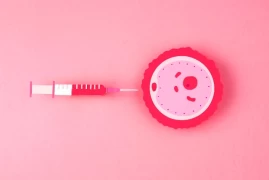
Overcoming Sexual Disinterest: Remove Obstacles on the Path to Happiness
- Overcoming Sexual Disinterest: Remove Obstacles on the Path to Happiness
- What is Sexual Disinterest?
- Factors Leading to Sexual Disinterest
- Sexual Arousal Phases:
- Coping with and Treating Sexual Disinterest
Sexuality is often a significant experience for women, providing both physical and mental relaxation, triggering a sense of ease. Female anatomy is structurally more prone to arousal, with various nerve points and structures in the genital area that trigger orgasm.
What is Sexual Disinterest?
Sexual disinterest refers to an individual having low or diminished interest or desire for sexual activities. This condition may manifest as a coldness, lack of enthusiasm, and motivation deficiency towards sexual impulses, desires, or fantasies. Sexual disinterest can arise from the interaction of various factors, rooted in both physical and psychological causes.
Factors Leading to Sexual Disinterest
Several complex factors can contribute to sexual disinterest, encompassing psychological, physical, relational, and environmental aspects. Here are some common factors that can contribute to sexual disinterest:
- Psychological Factors:
- Stress and Anxiety: Daily stress, work-related issues, financial difficulties, or general anxiety can lead to sexual disinterest.
- Depression: Depression can result in energy depletion and loss of interest, leading to sexual disinterest.
- Self-esteem Issues: Negative feelings about one's body can be associated with sexual disinterest.
- Sexual Biases or Cultural Influences: Societal norms, sexual taboos, or cultural pressures can affect sexual disinterest.
- Physical Factors:
- Hormonal Changes: Hormonal fluctuations, especially during menopause, can contribute to sexual disinterest.
- Medications: Some medications, particularly antidepressants, may decrease sexual desire.
- Chronic Illnesses: Chronic health problems like diabetes, heart diseases, or hormonal disorders can contribute to sexual disinterest.
- Sexual Pain or Discomfort: Pain or discomfort during sexual intercourse is a significant factor reducing sexual desire.
- Relational Factors:
- Relationship Issues: Lack of communication, trust issues, or other relationship problems can lead to sexual disinterest.
- Lack of Emotional Connection: Failing to establish an emotional connection with a partner can diminish sexual desire.
- Environmental Factors:
- Lifestyle Factors: Factors such as sleep patterns, irregular eating, and low exercise levels can negatively impact sexual desire.
- Substance Use: Alcohol or drug use can contribute to sexual disinterest.
Sexual disinterest is typically associated with a combination of these factors and varies from individual to individual. Seeking professional help is crucial for individuals experiencing sexual disinterest to identify underlying causes and plan appropriate treatment.

Sexual Arousal Phases:
- Excitement
- Plateau
- Orgasm (including various types such as clitoral orgasm, vaginal orgasm, consecutive orgasms, composite orgasms, status orgasms, extended-expanded tantric orgasms)
- Resolution
However, women's psychological structures and self-imposed limits can sometimes lead to problems such as the inability to orgasm or sexual disinterest in response to nerve reactions. Unfortunately, a significant portion of women in our society experiences orgasm-related issues.
Coping with and Treating Sexual Disinterest
In dealing with and treating sexual disinterest, sexual therapies can be highly effective. These therapies focus on resolving past issues, addressing knowledge gaps, correcting misconceptions, evaluating couple relationships, and understanding one's own body.
In addition to therapy, surgical interventions such as G-spot enlargement can be considered. This procedure facilitates orgasm by enlarging the G-spot, enhancing sexual pleasure for women. Surgical methods like genital filling, vaginal tightening, and clitoral aesthetics are also applied to increase women's sexual pleasure.
In addition to the G-spot, other crucial areas for sexual satisfaction and orgasm include the vaginal entrance, cervix, and clitoris. Surgical interventions aimed at enhancing sexual health can help women gain more confidence and enjoy sexuality.

Op. Dr. Sevinç Bilgin
Specialist in Obstetrics and Gynecology





